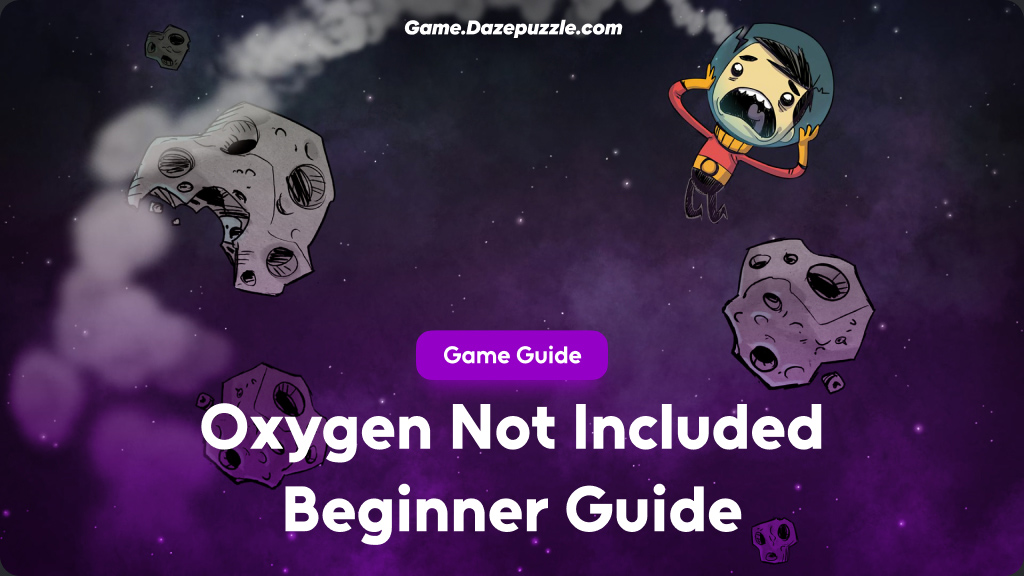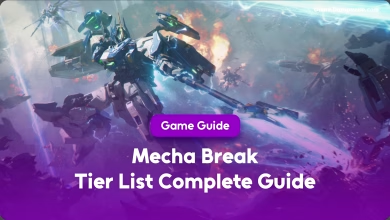So, you’ve decided to dive headfirst into the wonderfully chaotic world of Oxygen Not Included (ONI). Awesome choice! Get ready for a ride filled with hilarious Duplicant antics, moments of sheer panic, and the incredible satisfaction of building a self-sustaining space colony against all odds. This Oxygen Not Included Beginner Guide is your trusty companion to navigate the early game, avoid common face-palm moments, and set yourself up for long-term success. Let’s get your little Dupes thriving!
Table of Contents
What is Oxygen Not Included (ONI) Anyway?
Imagine being chucked onto a random asteroid with a few quirky individuals (called Duplicants, or Dupes for short) and told, “Alright, don’t suffocate, starve, or succumb to stress-induced vomiting. Good luck!” That’s ONI in a nutshell. It’s a space-colony simulation game where you manage every tiny detail of your Dupes’ lives and their environment.
A Totally Normal Day on an Asteroid (Not!)
In ONI, you’re not just building; you’re battling physics, chemistry, and biology. You’ll be digging tunnels, generating oxygen (because, you know, it’s not included), growing food, managing waste (yes, Dupe toilets are a thing!), researching new technologies, and trying to keep your Dupes from having complete meltdowns. Every asteroid is procedurally generated, so each new game is a fresh challenge with different resources and hazards.
First Steps: Don’t Panic! (Cycles 1-10)
The first few cycles (days) are critical. Your goal is to establish the absolute basics to keep your starting Dupes alive and kicking.
Picking Your Starting Crew (Dupes) – It Matters!
You start with three Dupes, chosen from a random selection. Their traits and interests can make a huge difference, especially early on. When looking at traits, prioritize those that give immediate benefits. For instance, a Dupe with an interest in Digging, Building, or Researching will learn related skills faster and gain morale from doing those jobs, which is a big plus. Positive traits like having +3 Mining (Digger), +3 Learning (Quick Learner), or perks for faster digging/carrying (Strong Arm/Mole Hands) and movement (Twinkletoes) are excellent. Some traits even offer morale boosts for specific activities, such as ‘Kitchen Menace’ for Dupes assigned to cooking.
On the flip side, try to avoid traits that will cause immediate headaches. An Anemic Dupe with -5 Athletics will be painfully slow. A Flatulent Dupe is amusing, releasing random bursts of natural gas, but this can complicate your atmospheric control. Narcoleptic Dupes who fall asleep randomly can disrupt urgent tasks, while those with a Bottomless Stomach will put extra strain on your early food supply. A Yokel, who cannot perform research, is a definite no for your initial researcher. Don’t stress too much about getting the “perfect” trio, as adapting is part of the fun, but a good digger and a capable researcher will certainly smooth out the early game.
Setting Up Your First “Home”
Your initial base doesn’t need to be pretty, just functional. Focus on establishing essential rooms first. Your top priority should be sanitation. Build two Outhouses in a dug-out area. Crucially, place two Wash Basins (or Sinks if you research them quickly) at the entrance, ensuring the arrows point so Dupes wash their hands after using the Outhouse to prevent germs from spreading. You’ll need a Pitcher Pump in a nearby clean water pool to supply these Wash Basins. Next, designate an area for Cots – three will do for your starting crew. Remember that enclosing rooms and making them specific types, like Barracks, provides a morale boost to your Dupes.
Alongside shelter and sanitation, basic research is key. Build a Research Station as soon as possible and assign your Dupe with the best learning skill or research interest to it. Early research priorities should include Basic Farming (for Mealwood), Power Regulation (to unlock the Jumbo Battery and eventually Smart Batteries), and Plumbing for setting up proper bathrooms later on.
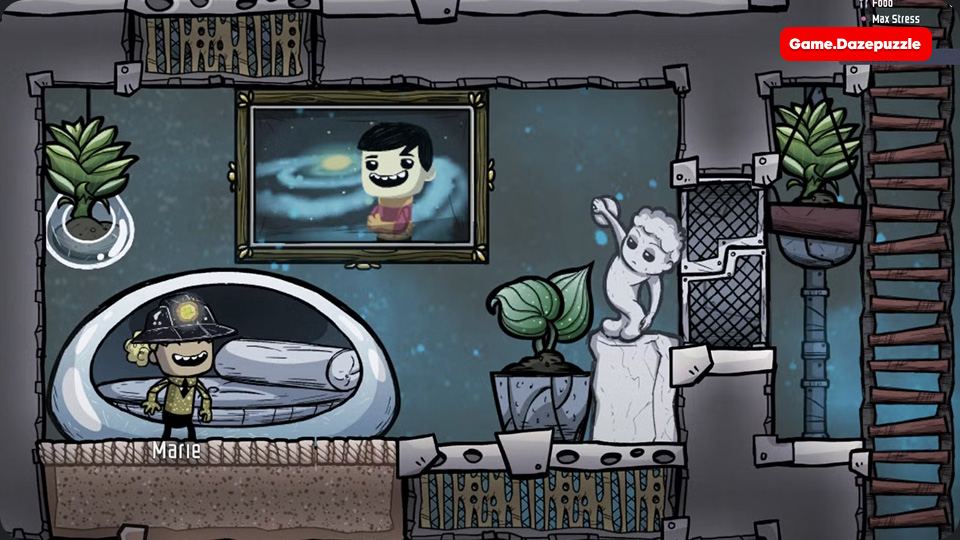
The Big Three: Oxygen, Food, and Power (Early Edition)
Your Dupes have three immediate, non-negotiable needs: breathable air, food, and power for your new research station. Your starting asteroid area will contain some Oxylite, a mineral that naturally releases oxygen. However, this is a finite resource and won’t last long. You’ll likely also dig into areas containing Algae. Once the Oxylite starts to dwindle (usually around Cycle 5), build an Oxygen Diffuser and load it with Algae to maintain breathable air. Keep a close watch on your Algae supply, as it too is limited.
For food, your Dupes begin with some rations, but these will be consumed quickly. You can find Muckroot by digging up buried objects; these provide an immediate source of food. To supplement this, build a Microbe Musher and set it to produce Mush Bars. These bars require water and dirt and aren’t the most efficient food source (and can sometimes give Dupes an upset stomach), but they are crucial for preventing starvation until you can establish farms.
Finally, to power your Research Station and Oxygen Diffuser, you’ll need to generate electricity. Build a Manual Generator (affectionately known as the hamster wheel) and connect it to a couple of Tiny Batteries. Assign a Dupe to run on the generator. This basic setup will cover your power needs for the initial few cycles.
Surviving the Early Game Crunch (Cycles 10-50)
Now that you’ve survived the initial landing, it’s time to stabilize and plan for slightly longer-term survival. This means upgrading your basic systems for oxygen, food, and power.
Oxygen: Beyond Algae
Depending solely on Algae for oxygen is a temporary approach with a limited lifespan. A more sustainable solution lies in utilizing an Electrolyzer. This crucial machine breaks down water into Oxygen and Hydrogen. Your goal should be to have an Electrolyzer operational around Cycle 20-30, ideally before your Algae runs out.
For a simple initial setup, position the Electrolyzer in an area with good air circulation. The Hydrogen it generates will rise due to being lighter than oxygen (you can capture and use this for power later), while the Oxygen will distribute for your Duplicants to breathe. Be aware that Electrolyzers produce a considerable amount of heat, a factor that will become more important later. Advanced players often discuss “SPOMs” (Self-Powered Oxygen Modules), which are more intricate designs that use the produced Hydrogen to power the system, establishing a self-sustaining oxygen cycle. While you don’t need to build a perfect SPOM immediately, it’s a worthwhile mid-game objective.
Food Glorious Food: Moving Past Mush
While Mush Bars offer a temporary food solution, they aren’t a sustainable option for your industrious Duplicants. It’s time to transition to proper farming with Mealwood, assuming you’ve already researched Basic Farming. Construct Planter Boxes in a well-lit location – you can use a Ceiling Light if needed, though it will consume power – and plant Meal Lice seeds.
Keep in mind that Mealwood has an optimal temperature range; extreme heat or cold will hinder or halt its growth. Your Duplicants will automatically harvest the Meal Lice once mature. These can then be processed in an Electric Grill (after researching it) to create Pickled Meal, a higher-quality food source with a longer shelf life. As a general guideline, aim for approximately 4-5 Mealwood plants per Duplicant to meet their basic food requirements.
Another avenue to explore for food (and other resources) is Ranching, particularly with Hatches. These small, rock-like critters consume materials like Sandstone and excrete Coal, which is an excellent power source for the early to mid-game. You’ll often find Hatches naturally in the starting biome. Once you research Critter Ranching, you can build Critter Drop-Offs and Grooming Stations to create proper stables. Groomed critters are happier, which means they reproduce faster and provide more resources. Ranching Hatches offers a sustainable source of Coal and, eventually, meat when you start culling excess critters.
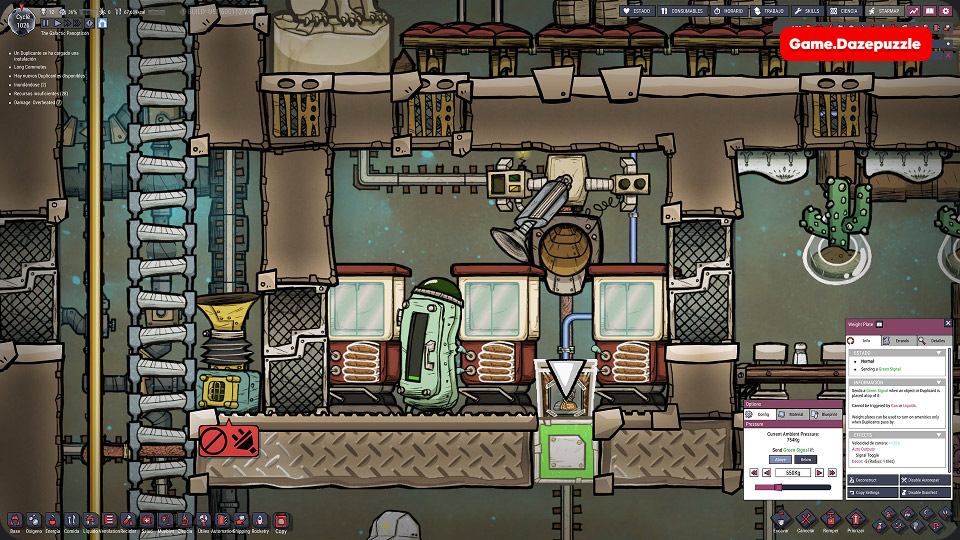
Powering Up: Getting Off the Hamster Wheel
Manual Generators are inefficient and tie up valuable Dupe labor. It’s time for an upgrade. If you have Hatches producing coal, or a good mined supply, the Coal Generator is your next logical step. It produces significantly more power than a Dupe on a wheel. To make it even better, research Automation and build Smart Batteries. A regular battery simply charges until it’s full, often leading to wasted fuel as the generator keeps running. A Smart Battery, however, can be connected with Automation wire to your Coal Generator, instructing it to ONLY run when the battery actually needs charging. This simple automation saves a massive amount of fuel and significantly reduces the heat output from your generator.
You might also like this: Top 10 Competitive Multiplayer Games You must Try!
Keeping Things Clean (and Your Dupes Sane)
A messy, germ-filled base is a recipe for stressed and sick Dupes. Managing waste and Dupe stress is crucial for a smooth-running colony. Your Outhouses will produce Polluted Dirt. Build a Compost pile in a sealed-off area, preferably away from your main living and working spaces, to convert this Polluted Dirt back into regular Dirt. Ensure your Dupes can access the Compost, but try to contain the Polluted Oxygen it off-gases. Similarly, Polluted Water from sinks and eventually showers needs to be stored safely. Dig a dedicated pit for it, ideally lined with tiles to prevent it from seeping into the surrounding terrain and creating more Polluted Oxygen clouds.
Duplicants experience stress from various sources, including working in the dark, having wet feet, consuming poor-quality food, and being in unattractive surroundings. Elevated stress results in negative Duplicant reactions like stress vomiting, overeating, or damaging essential equipment.
To mitigate stress, begin by enhancing your base’s Decor. As you acquire extra resources, replace natural dirt and rock with constructed Tiles, which noticeably improves the environment. Later, you can add sculptures and decorative plants. Ensure that main corridors and work areas are well-lit. Creating designated and enclosed Barracks, Mess Halls, and Latrines provides beneficial Room Bonuses and boosts morale. In situations of extreme stress, Massage Tables can offer relief, although they require Duplicant time to use.
Common Beginner Traps and How to Dodge Them
We’ve all fallen into these traps. Here are some classic ONI pitfalls and how you can sidestep them:
Expanding Too Fast, Too Soon
It’s incredibly tempting to dig out vast sections of the asteroid and eagerly accept every new Duplicant offered by the Printing Pod. You should resist this urge. More Dupes mean a greater demand for oxygen, food, and more frequent toilet breaks. A larger base also means more areas where heat can build up and undesirable gases can spread, making environmental control more difficult. The fix is to only print new Dupes when you are confident your current infrastructure can comfortably support them. Expand your base methodically, only digging out new areas as your colony’s needs genuinely require it.
Ignoring Temperature – It Gets Hot in Here!
Many pieces of machinery, like generators, electrolyzers, and refineries, produce a significant amount of heat. Additionally, your farms have ideal temperature ranges for crop growth. Ignoring this build-up of heat is a common mistake. If your base gets too hot, farms will stop producing food, machinery can overheat and break down, and your Dupes will become stressed and less efficient. Early on, try to mitigate this by keeping heat-producing machines physically separate from your farms and main living areas. Digging into nearby cold biomes can offer temporary cooling relief. As you progress, you’ll need to research and implement active cooling solutions, such as using Wheezeworts (special plants that cool the air) or building more complex Aquatuner/Steam Turbine setups.
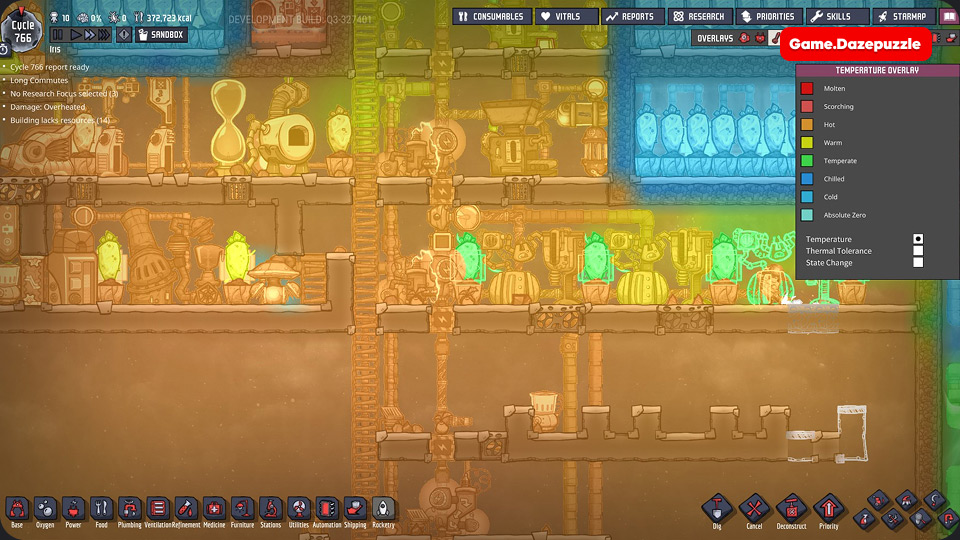
The Dreaded CO2 Creep
As your Duplicants breathe, they release Carbon Dioxide (CO2), which, being heavier than oxygen, naturally settles in the lowest parts of your base. This accumulation can create issues in areas where you grow plants or where your Duplicants sleep. While some early-game plants like Mealwood don’t use CO2, high concentrations are detrimental to your Dupes’ breathing.
Initially, the easiest solution is to dig a CO2 pit at the bottom of your explored area. This allows the gas to collect safely away from crucial zones. Later in the game, you can employ Carbon Skimmers for active CO2 removal or even discover methods to utilize it with specific plants or creatures.
Forgetting About Morale and Decor
It’s easy to fixate on essential survival needs like oxygen and food, but neglecting Duplicant morale can be a critical mistake. Unhappy Dupes become less productive and may even exhibit destructive behavior during stress reactions. A downward spiral of low morale can lead to colony failure, even with abundant resources.
To maintain a thriving colony, actively manage your base’s decor. Construct appealing, enclosed rooms for specific functions to provide morale boosts. Gradually enhance the quality of your Dupes’ food as you discover new cooking techniques. Ensure sufficient lighting and allocate some leisure time for your Duplicants. These seemingly minor adjustments can significantly impact their overall happiness and efficiency.
Quick Tips for New Asteroid Bosses (That’s You!)
Here’s a quick reference table for some early game wisdom:
| Category | Tip | Why it Helps |
|---|---|---|
| Duplicants | Don’t accept every Dupe. Be selective. | Prevents outstripping your resources. |
| Oxygen | Transition from Algae to Electrolyzers before Algae runs out. | Ensures a sustainable oxygen supply. |
| Food | Get Mealwood farms running early. | More reliable than Mush Bars. |
| Power | Automate Coal Generators with Smart Batteries. | Saves fuel, reduces heat and Dupe labor. |
| Base Building | Build downwards, letting CO2 sink. | Keeps main living/working areas breathable. |
| Temperature | Isolate heat-producing machines. | Prevents your farms and base from cooking. |
| Sanitation | Always have Dupes wash hands after using the toilet. | Prevents germ spread and sickness. |
| Research | Keep your researcher busy, prioritizing key survival techs. | Unlocks better solutions faster. |
| Learning | Don’t be afraid to fail and restart. It’s part of the learning curve! | Each failure teaches you something new. |
What’s Next? Venturing into the Mid-Game
Once you’ve stabilized your basic survival needs (usually around Cycle 50-100), you’re heading into the mid-game. This is where things get even more interesting and complex!
Refining Metals
You’ll need Refined Metals (like Copper and Iron become Refined Copper and Steel) for advanced buildings. This usually involves a Rock Crusher (early, inefficient) or a Metal Refinery (better, but produces a LOT of heat).

Atmo Suits: Exploring the Unknown
Atmo Suits (Exosuits) allow your Dupes to venture into hazardous environments: super hot areas, chlorine-filled pockets, vacuums, etc. This is crucial for accessing new resources and taming more dangerous geysers.
Taming Geysers
You’ll eventually uncover Geysers and Vents that output things like hot steam, natural gas, or even volcanoes erupting metal. “Taming” these means building systems to safely harness their resources without destroying your base with heat or pressure.
You’ve Got This!
Oxygen Not Included can feel overwhelming at first, but stick with it. This guide should give you a solid foundation for those critical early cycles. Remember to experiment, read tooltips, and don’t be afraid to consult the amazing ONI community if you get stuck. Every failed colony is a lesson learned. Now go forth and try not to suffocate your Dupes (too many times)! Good luck, colony manager!
Thank you for keeping up with Game.Dazepuzzle.com

